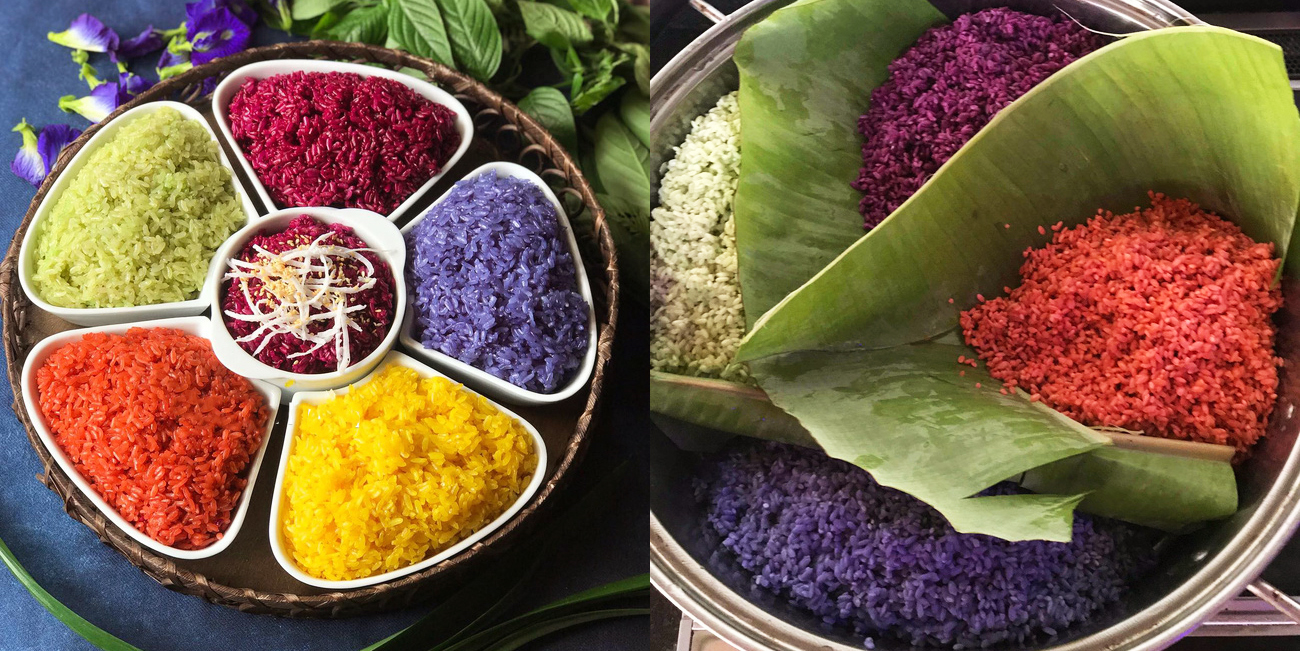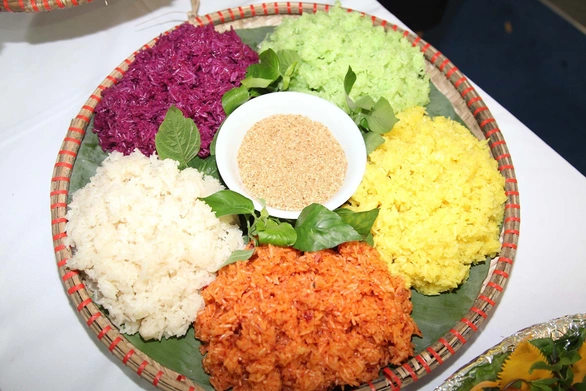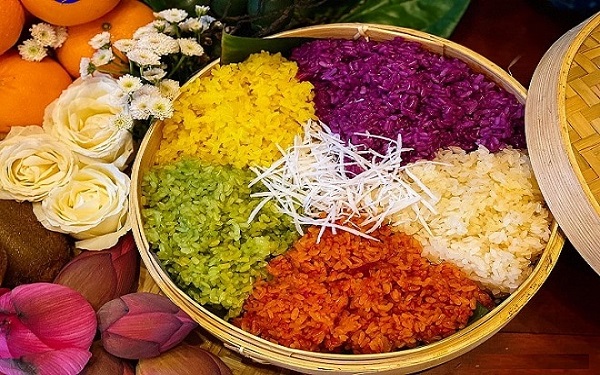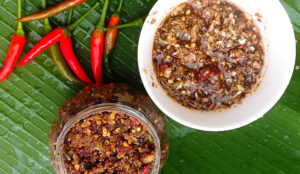Xoi Nep: A Traditional Sticky Rice Dish of Vietnam’s Northwest
Xoi nep (sticky rice) is a beloved dish in the Northwest region of Vietnam, known for its simple yet rich flavors and versatility. The dish plays a significant role in the daily life and cultural practices of the people in this mountainous area, where sticky rice is not just a food but a part of the region’s identity. Often enjoyed as a breakfast, snack, or accompaniment to other dishes, xoi nep is a staple that brings people together and celebrates the agricultural traditions of the Northwest.

The Essence of Xoi Nep
Xoi nep is made from glutinous rice, also known as sticky rice or nep, which is a special variety of rice that has a sticky, chewy texture when cooked. The rice is soaked overnight and then steamed, making it tender and soft with a slight translucence. Unlike regular rice, nep has a higher starch content, which gives it its characteristic sticky texture, ideal for eating with hands, which is a common practice in many ethnic communities in the Northwest.

The dish can be served plain, or it can be enhanced with a variety of ingredients, making it both simple and versatile. In the Northwest, it is commonly paired with various toppings such as roasted peanuts, sesame seeds, sugar, or even savory options like pork, chicken, or dried fish, depending on the occasion and personal preference. This adaptability is one of the reasons xoi nep is so widely loved in the region.
The Significance of Xoi Nep in Northwest Culture
In the Northwest, xoi nep is more than just a meal – it is deeply embedded in the local customs and celebrations. The dish is often made in large batches and served during special occasions such as weddings, festivals, and family gatherings. It is a symbol of hospitality, warmth, and togetherness, as people come together to enjoy this comforting food.

Sticky rice is particularly important during the Lunar New Year (Tet) celebrations, where it is offered as an offering to ancestors and shared among family members. It is also a key component of rituals and religious ceremonies, where it symbolizes prosperity and unity. In the traditional weddings of the ethnic minorities, xoi nep is often part of the bridal feast, highlighting its importance as a dish that connects generations and brings people closer together.
How Xoi Nep Is Prepared and Enjoyed
The preparation of xoi nep is a careful and time-consuming process. The rice must be soaked overnight to ensure it cooks evenly and reaches the perfect level of stickiness. Once soaked, the rice is steamed for several hours in a bamboo steamer, which imparts a unique flavor to the dish. The steaming process ensures that the rice retains its moist and chewy texture while absorbing any added flavor from the toppings.
There are many variations of xoi nep, and the way it is served depends on the occasion. For everyday meals, the rice may be served simply with sugar, sesame seeds, or roasted peanuts. For more festive occasions, the sticky rice may be paired with savory toppings such as braised pork, chicken, or dried fish. Some regions also prepare xoi nep with specific herbs and vegetables, adding depth to the flavor and making it a more complete meal.
In many cases, xoi nep is served with a side of mam (fermented fish sauce), which adds a savory note that contrasts nicely with the sweetness of the sticky rice. In rural areas, it’s common to eat sticky rice wrapped in banana leaves, making it easy to carry and share with others during outdoor activities, such as festivals or market trips.
A Taste of Tradition
Xoi nep in the Northwest is more than just a dish – it’s a cultural treasure that reflects the values of the region’s people. The way sticky rice is prepared and shared speaks to the community’s close-knit relationships, hospitality, and respect for tradition. Whether served with savory or sweet toppings, it captures the simplicity and richness of the land, offering a comforting taste of the mountains and the deep bond between the people and their environment.

For those visiting the Northwest, tasting xoi nep is an essential experience. It’s not just about the flavor – it’s about connecting with the local culture, experiencing their way of life, and understanding the significance of food as a form of expression and connection. Whether enjoyed as part of a festival, a family gathering, or a daily meal, xoi nep is a dish that offers warmth and joy to everyone who tastes it.




